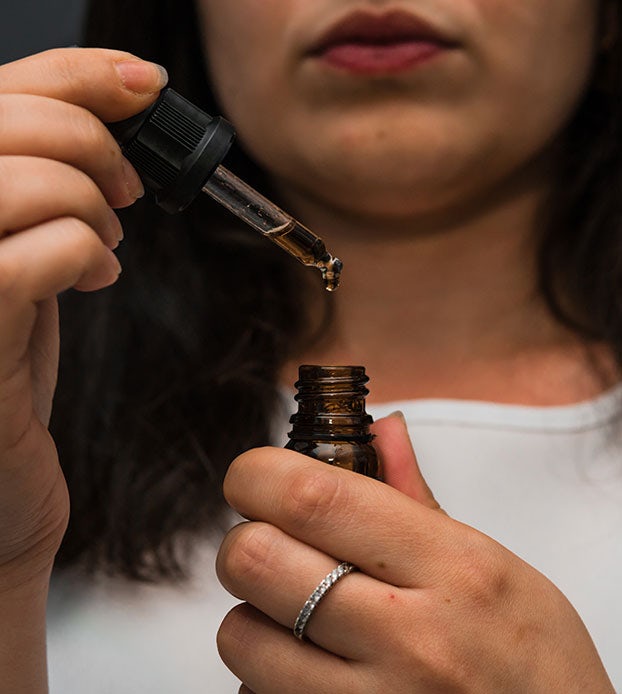Women who use cannabis are more likely than men to abuse it, and they take significantly less time to transition from moderate to severe use, according to a recent study.
The study, entitled “Sex and Gender Interactions on the Use and Impact of Recreational Cannabis,” examined a total of 131 academic studies published between 2009 and 2019 and found “there is emerging evidence that females transition more quickly to cannabis use dependence compared to males.”
The study focuses largely on the development of Cannabis Use Disorder (CUD) in the respondents, divided by gender. CUD is cannabis or marijuana addiction and its symptoms include a preoccupation with attaining, using, and coping with the effects of marijuana, as well as dependency and withdrawal.
The study states that cross-sectional studies in the United States found no difference between males and females in terms of the age when they first started using marijuana or first started heavily using, but did find evidence that women developed CUD significantly quicker than men do. According to one study quoted by the researchers, females who developed the disorder did so on average 4.7 years after they first used marijuana, as opposed to 5.8 years for men. Another study quoted by the researchers found that for women it took on average 2.24 years to develop a dependence, as opposed to 2.64 years for men.
In addition, the study found that women feel greater subjective effects at lower doses of orally-ingested THC and that “there is also emerging evidence that females may experience greater severity of cannabis dependence.”
The researchers state that in the studies they examined, “the negative effect of cannabis use on mental quality of life scores was more pronounced for women,” despite the fact that mood and anxiety disorders were just as prevalent among both genders in the sample population.
The researchers propose that there may be a social component to this, in that women “experience greater stigma and discrimination when they use substances of any kind, and this may partially explain the greater severity of CUD observed among women in some observational studies.”
Women who use substances like marijuana may also experience more isolation and not have the social support system in place like men do, “which may exacerbate the negative effects of women’s cannabis use dependence,” according to the study.
Research has consistently shown that men are more likely than women to use marijuana. According to findings from the National Cannabis Survey in Canada for the fourth quarter of 2019, 18.4% of male respondents had smoked marijuana in the previous three months, as opposed to 15.1% percent of women.

The report states that the greater prevalence of marijuana consumption among males could possibly be because substance use is more socially acceptable among boys and men and young men are more prone to exhibit risky behavior.
Beyond a difference in the frequency or intensity of cannabis use, the study also found that the methods used tend to differ according to gender. The study found that males are more likely to use smokable forms of cannabis than women and that women are more likely to use edibles than men are. This phenomenon also includes vaping, and the study cites as an indication of this the fact that young men make up 70% of those who have e-cigarette or vaping product use-associated lung injury (EVALI).
The difference in consumption methods were also seen in a 2019 Canadian survey which found that only 61.8% of female cannabis users said smoking is their most commonly used method of consumption, as opposed to 67.7% of men. When it comes to vaping, only 10.8% of women said it was their preferred method, as opposed to 15.8% of men. The stats were flipped for edibles, which were preferred by 13.2% of females, as opposed to 11.3% of male respondents.
The study speculates that those differences may reflect gender roles and norms regarding the acceptability of substance use and that “inhalation methods are more visible, while edible use can be easily concealed. This may be a more desirable option for girls and women, to avoid experiencing discrimination and stigma related to their cannabis use.”
One of the three main parameters in which the study assessed gender differences was in regard to driving while under the influence of cannabis. The researchers quoted a Swedish study that found a far higher proportion of male motorists arrested with THC concentrations detected in their blood (94% vs 6%) and their level of THC concentration was significantly higher as well. They also quote a US study which found that among college students who had smoked marijuana in the past month, 43.9% of males reported driving after using cannabis, while only 8.7% of females reported the same. A 2018 report that polled drivers in the United States found that overall 6.2% of male drivers had driven under the influence of marijuana over the past 12 months, as opposed to only 3.2% of female motorists.
An additional study published in January, found that sexual orientation may also be a factor in the prevalence of cannabis use. According to the study, “Differences in 30-Day Marijuana Use by Sexual Orientation Identity: Population-Based Evidence from Seven States” the researchers found that “lesbian women, gay men, and bisexual adults were more likely to use marijuana compared with heterosexual adults.”
The author of that study stressed in his conclusion that health professionals should prioritize identifying the risk factors for more severe marijuana use as marijuana laws loosen across the United States.
Sign up for bi-weekly updates, packed full of cannabis education, recipes, and tips. Your inbox will love it.

 Shop
Shop Support
Support


















